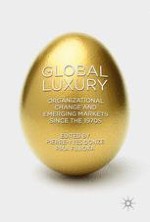2018 | OriginalPaper | Chapter
10. Crafting Time, Making Luxury: The Heritage System and Artisan Revival in the Swiss Watch Industry, 1975–2015
Activate our intelligent search to find suitable subject content or patents.
Select sections of text to find matching patents with Artificial Intelligence. powered by
Select sections of text to find additional relevant content using AI-assisted search. powered by
